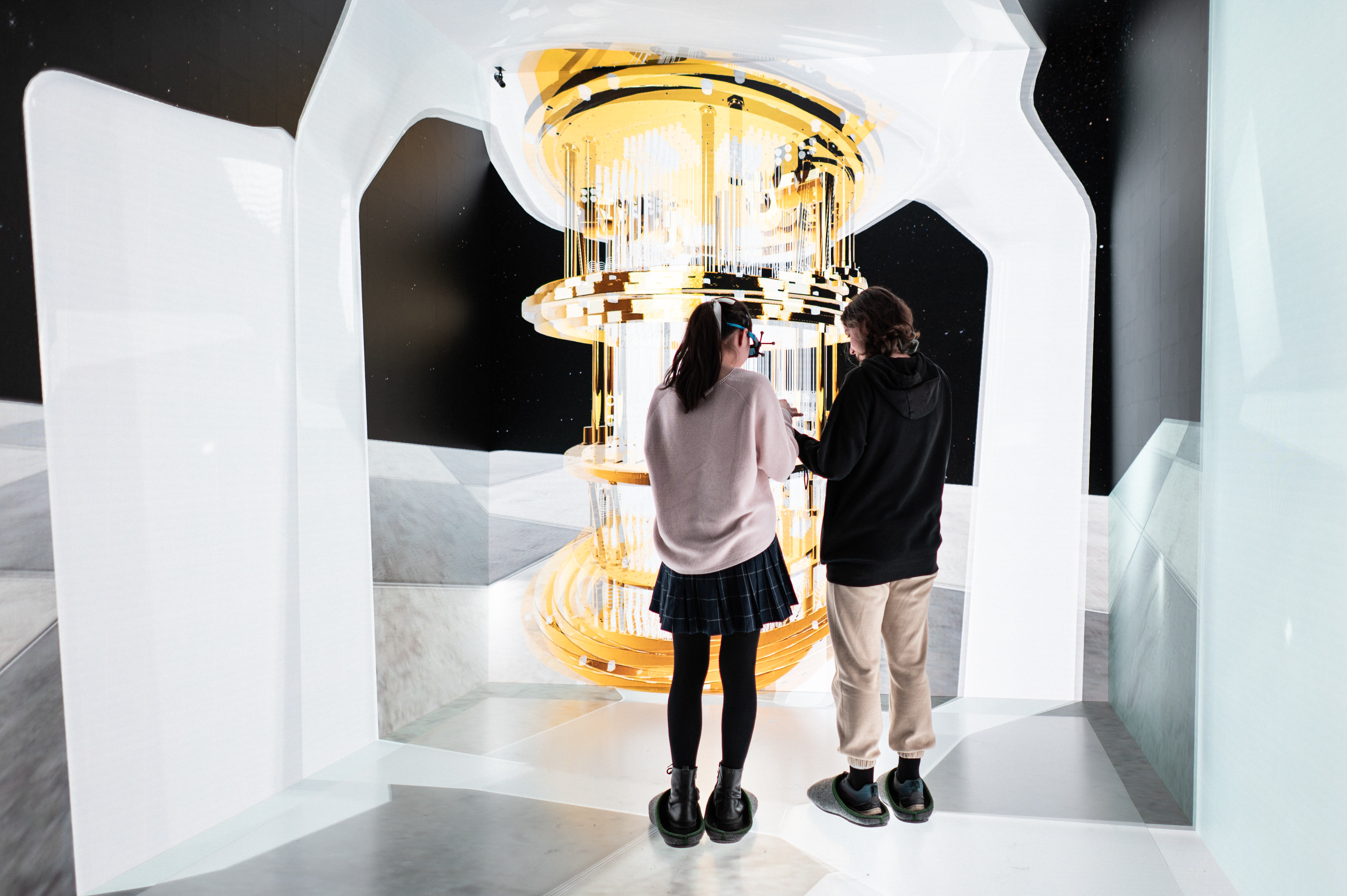How hot is the water used to cool the SuperMUC-NG supercomputer at the Leibniz Supercomputing Centre (LRZ)? How much faster is the SuperMUC-NG than the iPhone 8? And in which tasks can a quantum computer beat LRZ's supercomputer? The girls start their day at the LRZ with a short quiz and then they get hands-on.
“Dissecting” PC hardware
To see with their own eyes what actually belongs to the hardware of an ordinary computer, the students take apart old PCs. Rebecca, a computer scientist at the LRZ, leads them through the "dissection lesson": "Who can find the brain?" One girl correctly guesses that the "brain", the processor, is hidden behind the large fan. But first, all kinds of cable clamps and plugs are pulled out and numerous screws are unscrewed in order to fiddle the mainboard, the “nervous system”, out of the case. The RAM – the "short-term memory", as Rebecca explains it – the hard disk and the power supply are also removed one by one. The DVD drive shows the age of the devices. The tasks of each component are always discussed together and if something gets stuck and parts just won't come loose, the girls help each other.
From the ordinary PC, the program moves on to the supercomputer. But before the girls get to see it in its entirety on the tour of the computer building, they get to see a single element of the supercomputer, several of which are stacked on top of each other in a server rack. Here, too, the girls can see the processor, RAM, etc., but instead of a mechanical fan, they can see connections and pipes for water cooling.


